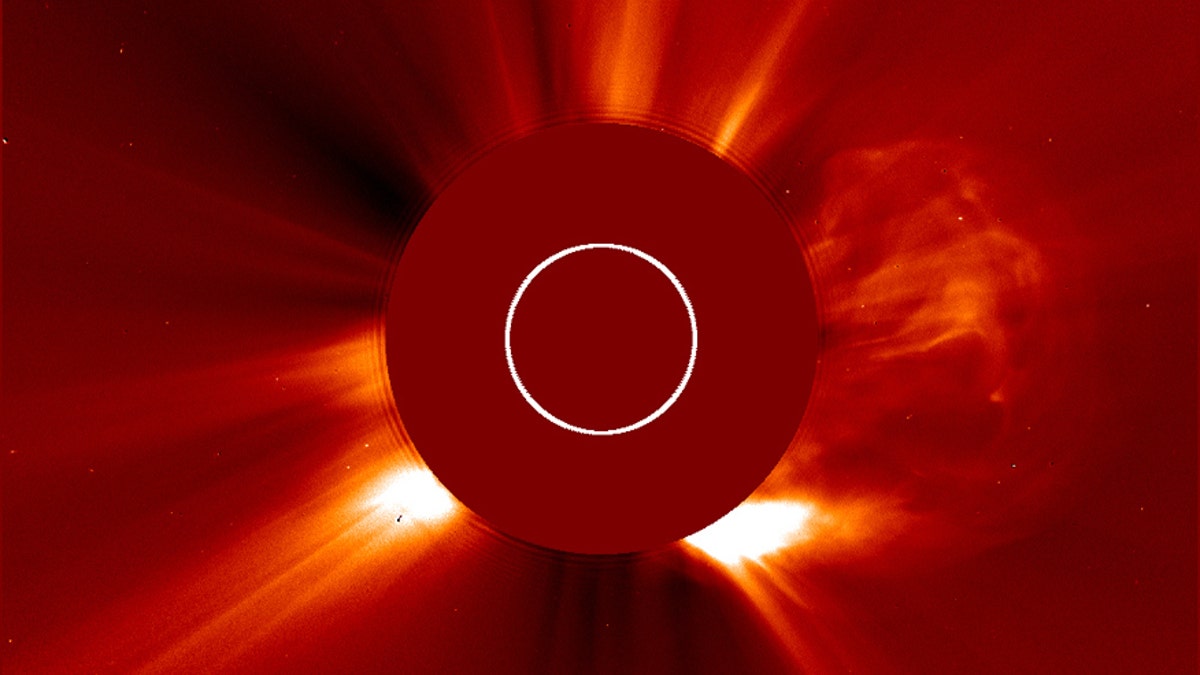
On the right side, a cloud of solar material ejects from the sun in one of the fastest coronal mass ejections (CMEs) ever measured. (ESA&NASA/SOHO)
Earth dodged one of the most massive magnetic solar bursts ever on July 23, 2012, scientists with the University of California, Berkeley revealed on Wednesday -- saving the planet from widespread havoc.
"Had it hit Earth, it probably would have been like the big one in 1859, but the effect today, with our modern technologies, would have been tremendous," UC Berkeley research physicist Janet G. Luhmann said in a press release.
The 2012 massive magnetic cloud sped through space at over 1,200 miles per second, four times faster than a typical burst of solar power.
According to researchers, had the quick succession of coronal mass ejections (CMEs)-- the most intense kind of solar eruptions -- come nine days earlier, they would have hit Earth, potentially disabled satellites and GPS, and even affected the electrical grid.
[pullquote]
A study from last year revealed that a solar storm like the one Earth narrowly avoided could have cost up to $2.6 trillion in damages. A similar event in March 1989 caused Canada's Hydro-Quebec power grid to collapse and left six million people with no electricity for nine hours.
"The cost of an extreme space weather event, if it hits Earth, could reach trillions of dollars with a potential recovery time of 4-10 years," professor at China's State Key Laboratory of Space Weather Ying D. Liu warned in a press release. "Therefore, it is paramount to the security and economic interest of the modern society to understand solar superstorms."
Luhmann and her team used NASA's Solar TErrestrial RElations Observatory (STEREO) to observe the burst.
They found the energy of of two CMEs to be equivalent to approximately 1 billion hydrogen bombs.
Liu and Luhmann said it was critical to continue to research the magnetics fields of the sun and Earth in order to understand what causes these dangerous solar storms.
"Observations of solar superstorms have been extremely lacking and limited, and our current understanding of solar superstorms is very poor," Liu said. "Questions fundamental to solar physics and space weather, such as how extreme events form and evolve and how severe it can be at the Earth, are not addressed because of the extreme lack of observations."
